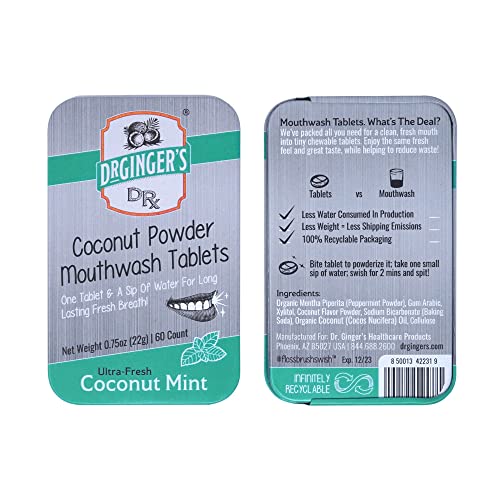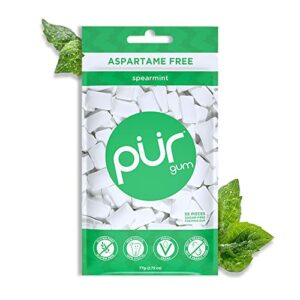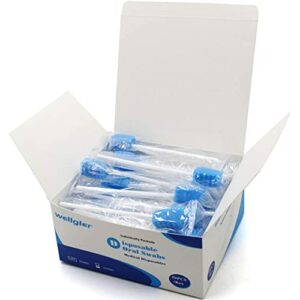In our step-by-step guide on how to use mouthwash correctly, we aim to provide you with clear instructions on the proper usage of mouthwash. We understand that using mouthwash may seem simple, but it is important to use it correctly to reap its full benefits. By following our guide, we hope to help you improve your oral hygiene routine and maintain a healthy mouth.
Freshen Your Breath with Top-Selling Mouthwashes
Choosing the right mouthwash
When selecting a mouthwash, it is important to choose one that caters to your specific needs. Take note of whether you are looking for breath freshening, cavity prevention, or gum health. By reading the labels carefully, you can understand the ingredients and their benefits, allowing you to make an informed decision.
To begin, assess your oral health needs. If you are primarily concerned with freshening your breath, look for a mouthwash that contains ingredients like mint or eucalyptus. These can help to mask odors and leave your mouth feeling refreshed. For those focused on cavity prevention, look for mouthwashes that contain fluoride. Fluoride helps to strengthen tooth enamel and protect against decay.
If gum health is your priority, seek out mouthwashes that contain antibacterial ingredients like chlorhexidine or cetylpyridinium chloride. These ingredients can help to reduce plaque and gum inflammation, promoting overall gum health.
Remember to read the labels carefully and understand the recommended usage instructions. Some mouthwashes are meant to be used daily, while others may be targeted for occasional use. By choosing a mouthwash that suits your specific needs, you can take an active step towards improving your oral hygiene and overall dental health.
Preparing the mouthwash
To prepare the mouthwash, we need to start by measuring the recommended amount as indicated on the bottle. It is crucial to follow the instructions accurately to achieve the desired effect and avoid any potential side effects. Carefully pour the specified volume of mouthwash into a measuring cup or spoon, ensuring that you achieve an accurate measurement.
In some instances, the mouthwash may require dilution with water. If this is necessary, follow the directions provided on the bottle. Add the appropriate amount of water to the mouthwash, ensuring that you maintain the correct ratio. Mixing the mouthwash with water as directed will help achieve the desired concentration and ensure effectiveness.
Remember to read the instructions on the bottle carefully and precisely measure the mouthwash. If dilution is required, follow the provided guidelines to achieve the desired concentration. By following these simple steps, you can prepare the mouthwash correctly and maintain optimal oral hygiene.
Rinsing technique
To effectively perform the rinsing technique, take a sip of mouthwash and hold it in your mouth. Then, gently swish it around for a duration of 30 seconds to 1 minute. Make sure to cover all areas inside your mouth, including your teeth, gums, and tongue. This thorough swishing will help ensure that the mouthwash reaches all the nooks and crannies, providing a thorough clean. While doing so, it’s important to avoid swallowing the mouthwash, as it is formulated for external use only. After the recommended time, spit out the mouthwash into a sink or basin. Remember, by diligently following this technique, you’ll help maintain good oral hygiene and keep your mouth feeling fresh and clean.
Spitting out the mouthwash
Lean over the sink and spit out the mouthwash. It might seem like a simple step, but it’s an important one in maintaining a healthy oral hygiene routine. When you’re done swishing the mouthwash around your mouth, make sure to follow these instructions:
- Lean over the sink: Position yourself over the sink to avoid any mess or spills.
- Spit out the mouthwash: Open your mouth slightly and let the mouthwash flow out into the sink. Be sure to get rid of all the liquid, ensuring you don’t swallow any of it.
- Do not rinse with water immediately: Resist the urge to rinse your mouth with water right away. Instead, allow the mouthwash to continue working for a few minutes. This will help maximize its benefits and give it enough time to reach all areas of your mouth.
By following these simple steps, you ensure that you’re effectively removing the mouthwash from your mouth and allowing it to work its magic. So remember, lean over the sink, spit out the mouthwash, and let it do its job for a few minutes before rinsing.
Frequency and timing
After brushing and flossing your teeth, it is important to use mouthwash to maintain good oral hygiene. To effectively use mouthwash, follow the recommended frequency mentioned on the bottle, which is usually once or twice a day. Start by pouring the appropriate amount of mouthwash into a cup or cap, making sure not to dilute it with water. Then, take a sip and swish the mouthwash around your mouth for about 30 seconds, making sure to cover all areas, including your teeth and gums. Spit out the mouthwash into the sink and avoid rinsing with water immediately to allow the active ingredients to work on your teeth and gums. Additionally, it is advisable to refrain from eating or drinking anything for at least 30 minutes after using mouthwash to maximize its effectiveness. By incorporating mouthwash into your oral care routine, you can enhance the cleanliness and freshness of your breath, promoting a healthier smile.
Maintaining oral hygiene
Remember that mouthwash is not a substitute for brushing and flossing. Maintaining a regular oral hygiene routine is crucial in order to keep your mouth healthy. Here are some important tips to help you maintain good oral hygiene:
- Brush your teeth at least twice a day, using a soft-bristled toothbrush and fluoride toothpaste. Make sure to brush all surfaces of your teeth, including the front, back, and chewing surfaces. Use gentle, circular motions to effectively remove plaque and food particles.
- Floss daily to clean between your teeth and along the gumline. Take around 18 inches of dental floss and wrap it around your middle fingers, leaving about 2 inches to work with. Gently slide the floss between each tooth, making a C-shape around the tooth and moving it up and down to remove plaque and debris.
- Use mouthwash as an additional step in your oral hygiene routine, but not as a replacement for brushing and flossing. Mouthwash can help freshen your breath and kill bacteria, but it does not effectively remove plaque or clean between teeth. Swish the mouthwash around your mouth for about 30 seconds and then spit it out. Avoid swallowing it.
- Replace your toothbrush every three to four months or sooner if the bristles become frayed. A worn-out toothbrush is less effective at cleaning your teeth.
- Visit your dentist regularly for check-ups and professional cleanings. Your dentist can identify any oral health issues early on and provide appropriate treatment.
Remember, maintaining a regular oral hygiene routine is essential for keeping your mouth healthy and preventing dental problems. By following these tips, you can ensure that your teeth and gums stay clean and strong.
Final thoughts on mouthwash usage
In conclusion, we have covered the essential steps to effectively use mouthwash. First, selecting the right mouthwash that suits your needs is crucial. Remember to read the label and choose one that targets your specific concerns, such as bad breath or gingivitis. Second, ensure proper brushing and flossing before using mouthwash to maximize its benefits. This will remove food particles and plaque, allowing the mouthwash to reach all areas of your mouth. Finally, follow the recommended dosage and duration mentioned on the packaging. Avoid swallowing the mouthwash and refrain from eating or drinking for at least 30 minutes afterwards. By following these steps, you can make the most out of your mouthwash and improve your oral hygiene. Remember, maintaining a consistent oral care routine is key to achieving a healthy and fresh mouth.
Essential Supplies
Maximizing your oral hygiene
Proper Techniques for Using Mouthwash
- Start by choosing the right mouthwash: Look for a mouthwash that suits your specific needs, whether it’s for freshening breath, reducing plaque build-up, or addressing other oral health concerns. There are different types of mouthwashes available, such as antiseptic, fluoride, and mouthwash for sensitive teeth
- Read the instructions: Before using any mouthwash, carefully read the instructions provided on the bottle. Pay attention to the recommended dosage and the recommended duration for rinsing
- Measure the correct amount: Pour the recommended amount of mouthwash into a cup or the cap provided with the bottle. Usually, it’s about 20-30 milliliters (4-6 teaspoons), but make sure to check the instructions for the specific mouthwash you are using
- Rinse thoroughly for the recommended time: Take the mouthwash into your mouth and swish it around for the recommended duration, which is typically around 30-60 seconds. Make sure to cover all areas of your mouth, including your teeth, gums, and tongue. It’s important not to swallow the mouthwash; instead, spit it out into the sink
- Avoid eating or drinking immediately after rinsing: To allow the mouthwash to work effectively, it’s recommended to avoid eating or drinking for at least 30 minutes after use. This will give the active ingredients in the mouthwash enough time to provide their intended benefits
- Remember, using mouthwash should be a supplement to regular brushing and flossing, not a replacement. It’s always a good idea to consult with your dentist or oral health professional for personalized advice on using mouthwash and maintaining good oral hygiene practices








![How to use mouthwash correctly? 7 Comfy Package [100 Count - 3 oz.] Small Paper Cups, Disposable Mini Bathroom Mouthwash Cups](https://m.media-amazon.com/images/I/31yRs9kICaS.jpg)


















